Oud Delft Nijmegen pair of handpainted tin-glaze Delft style polychrome wall dishes (bowls)
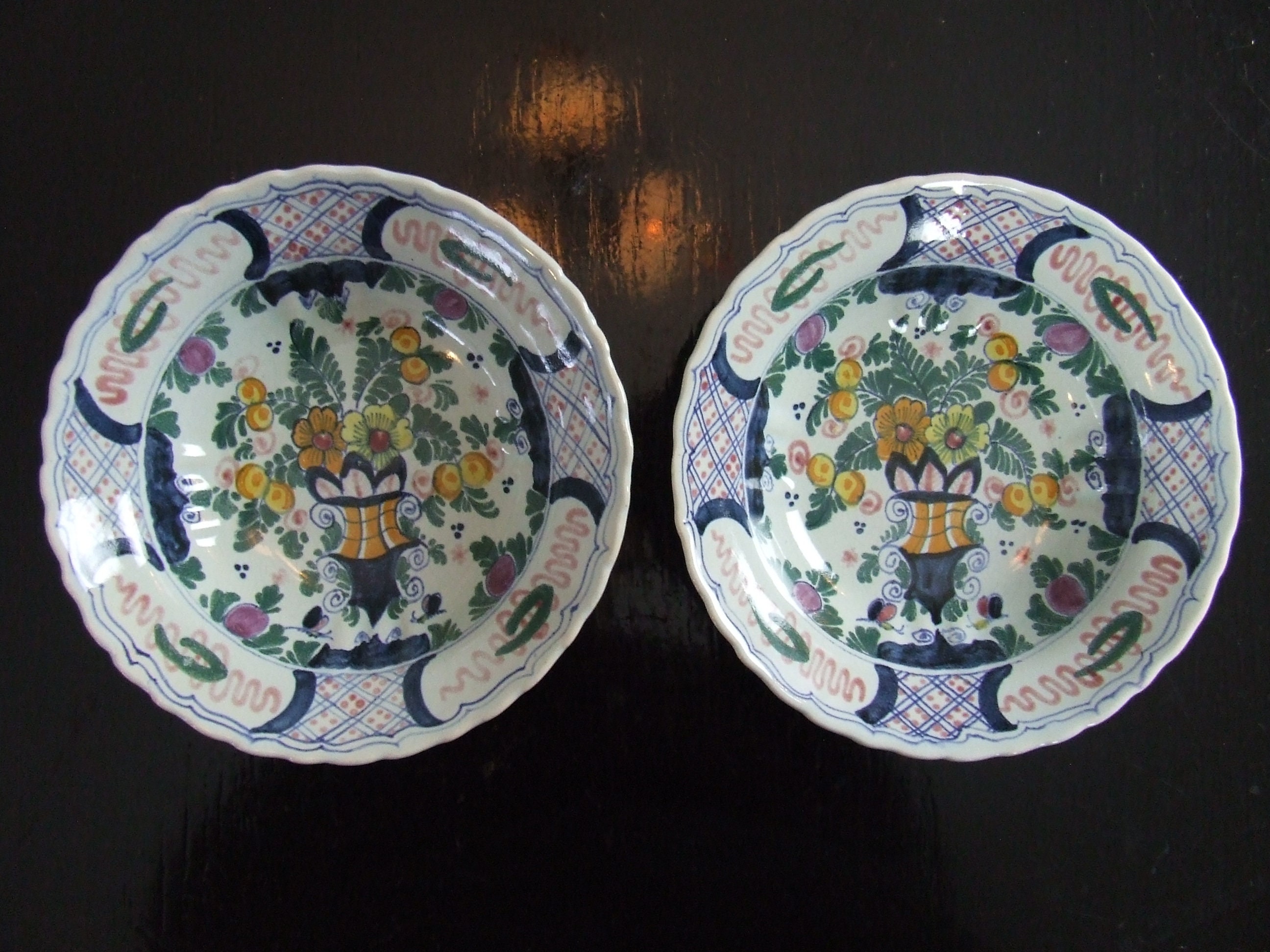
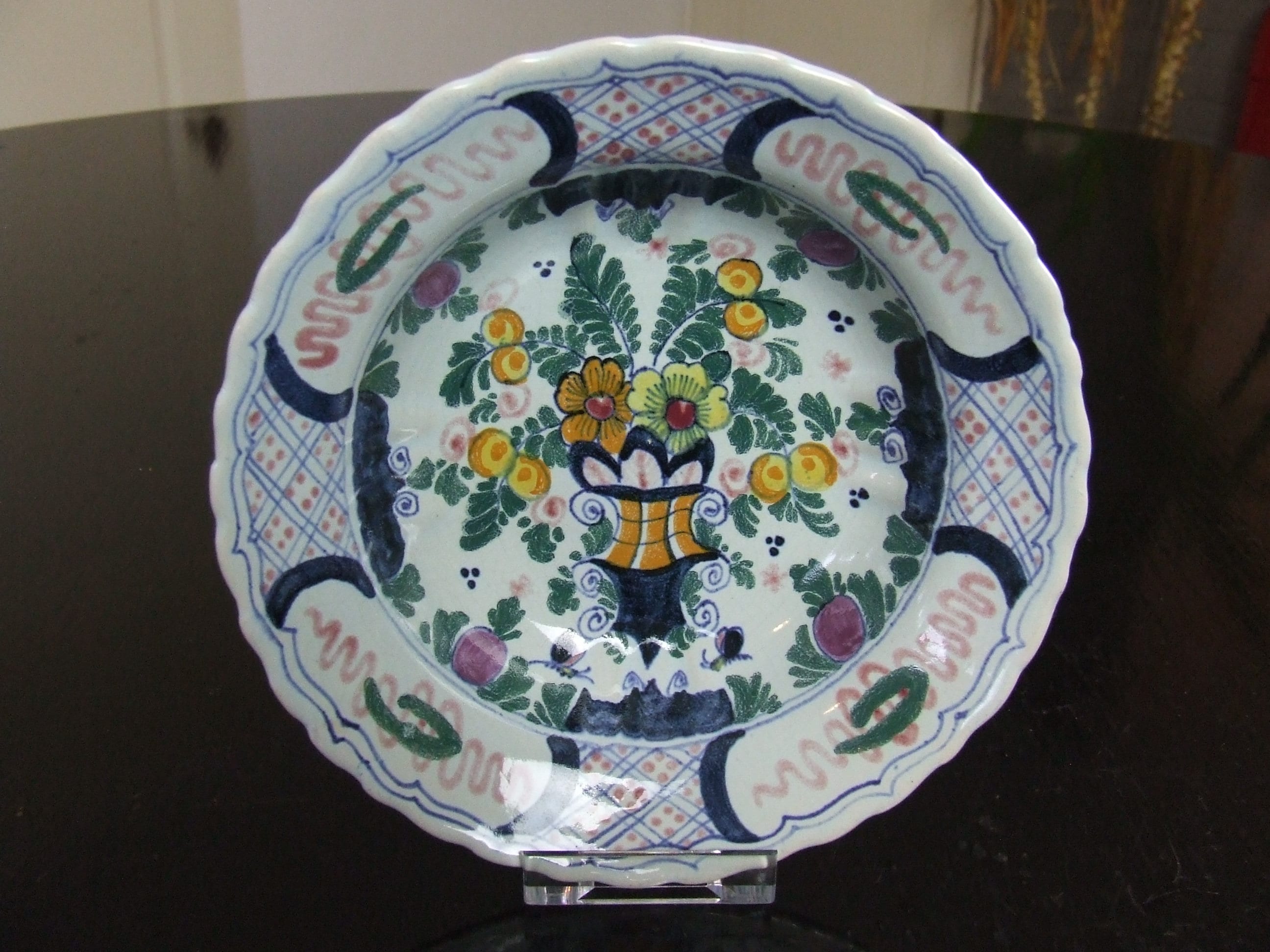
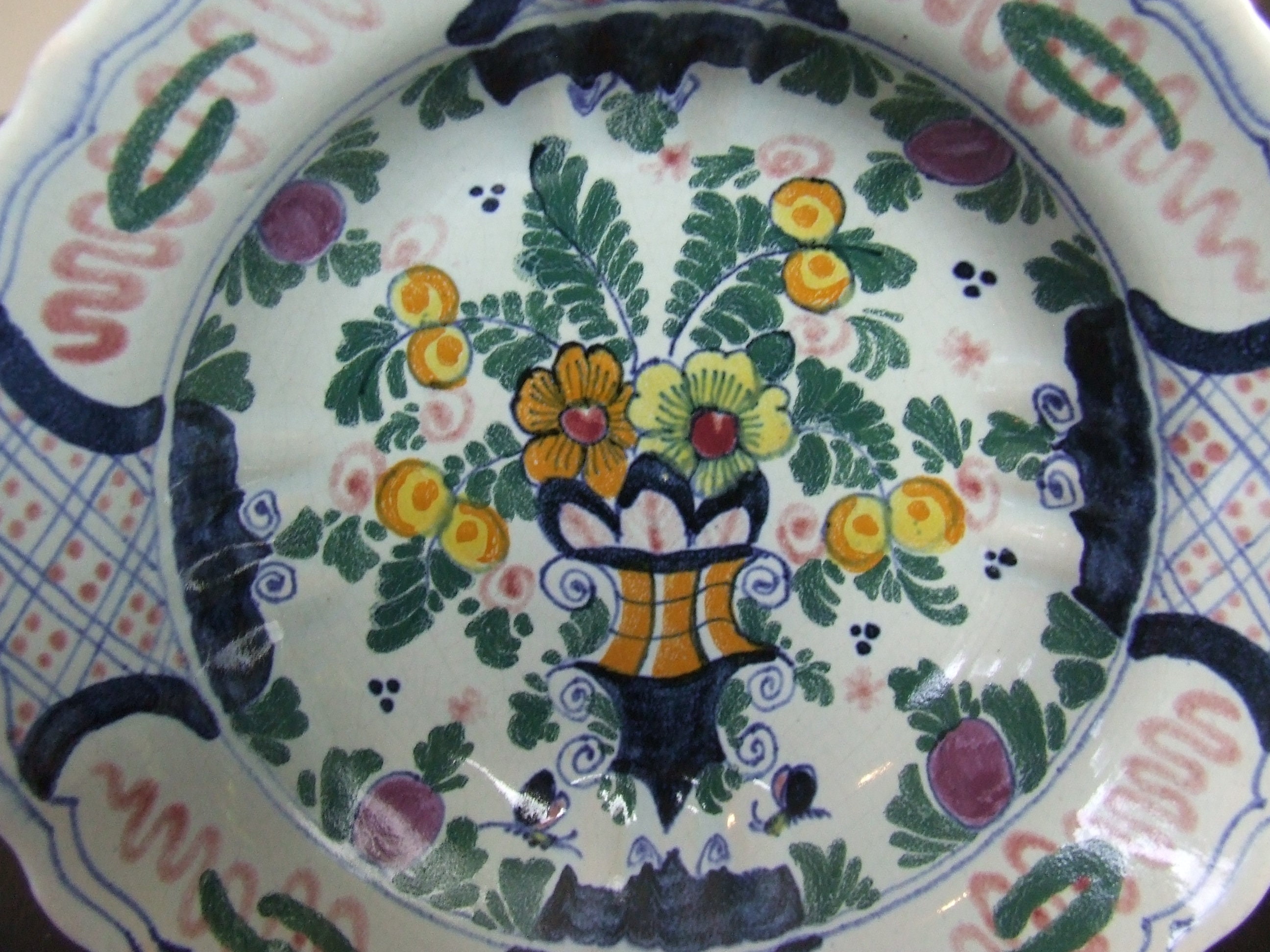
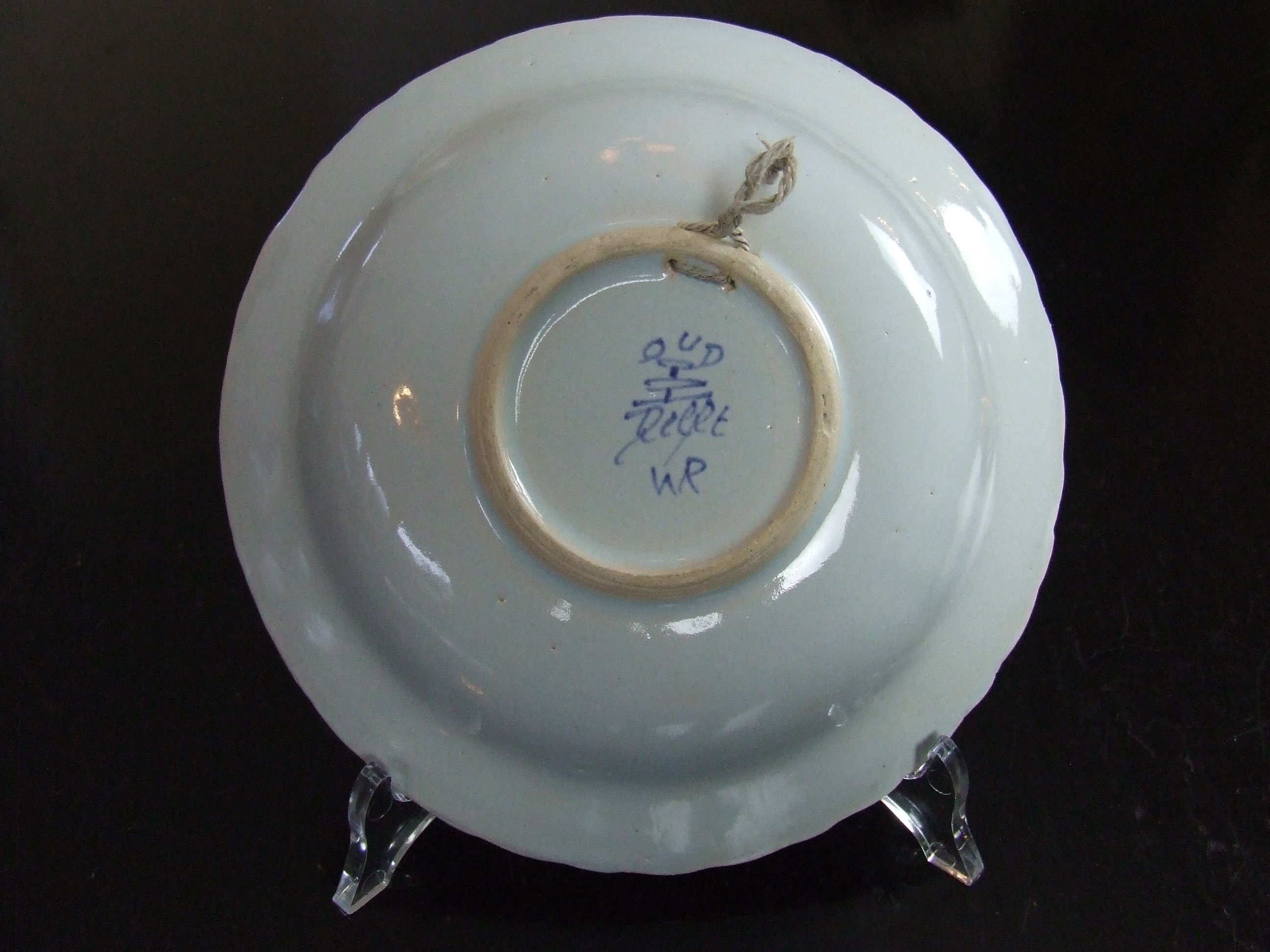
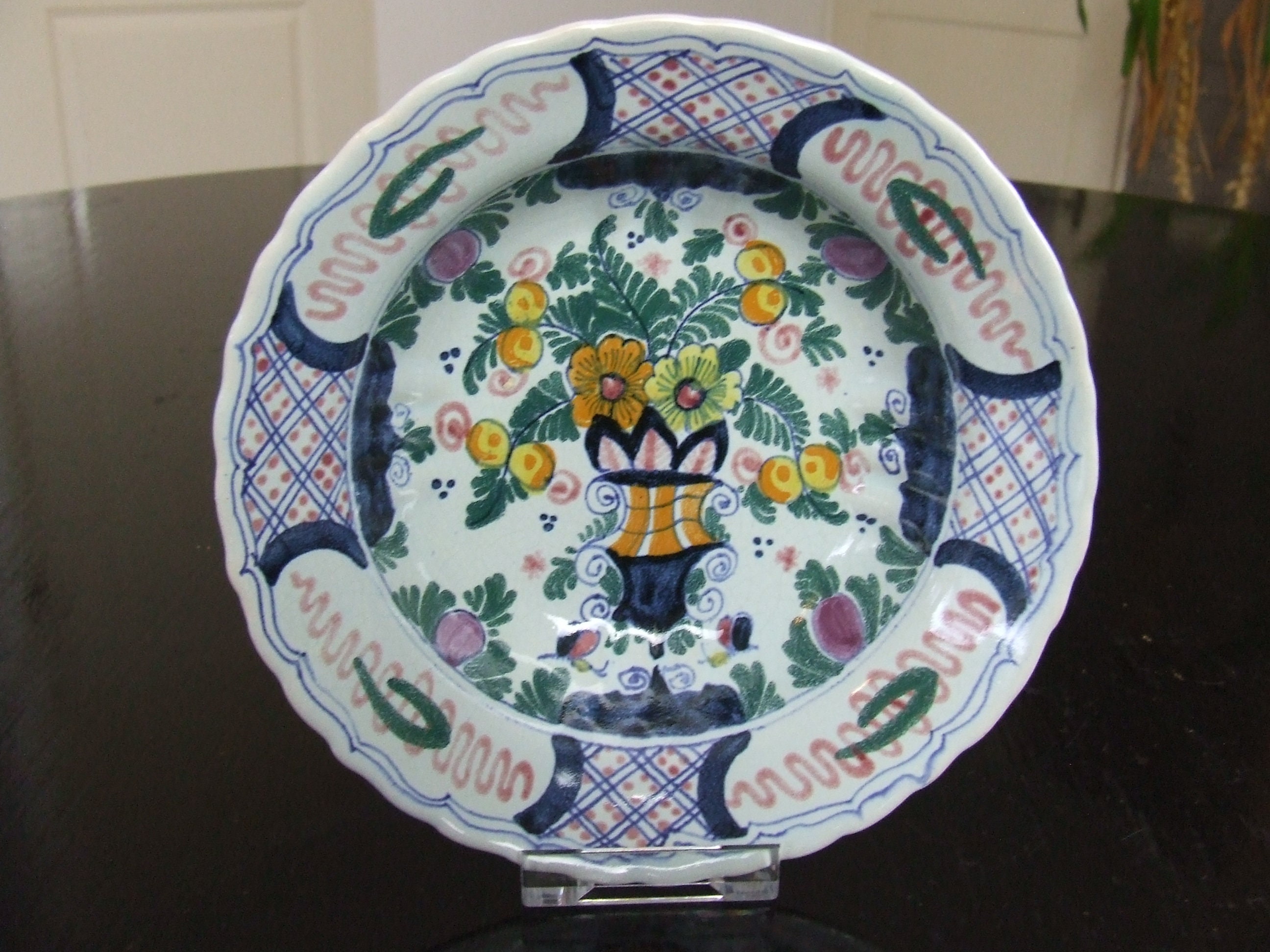
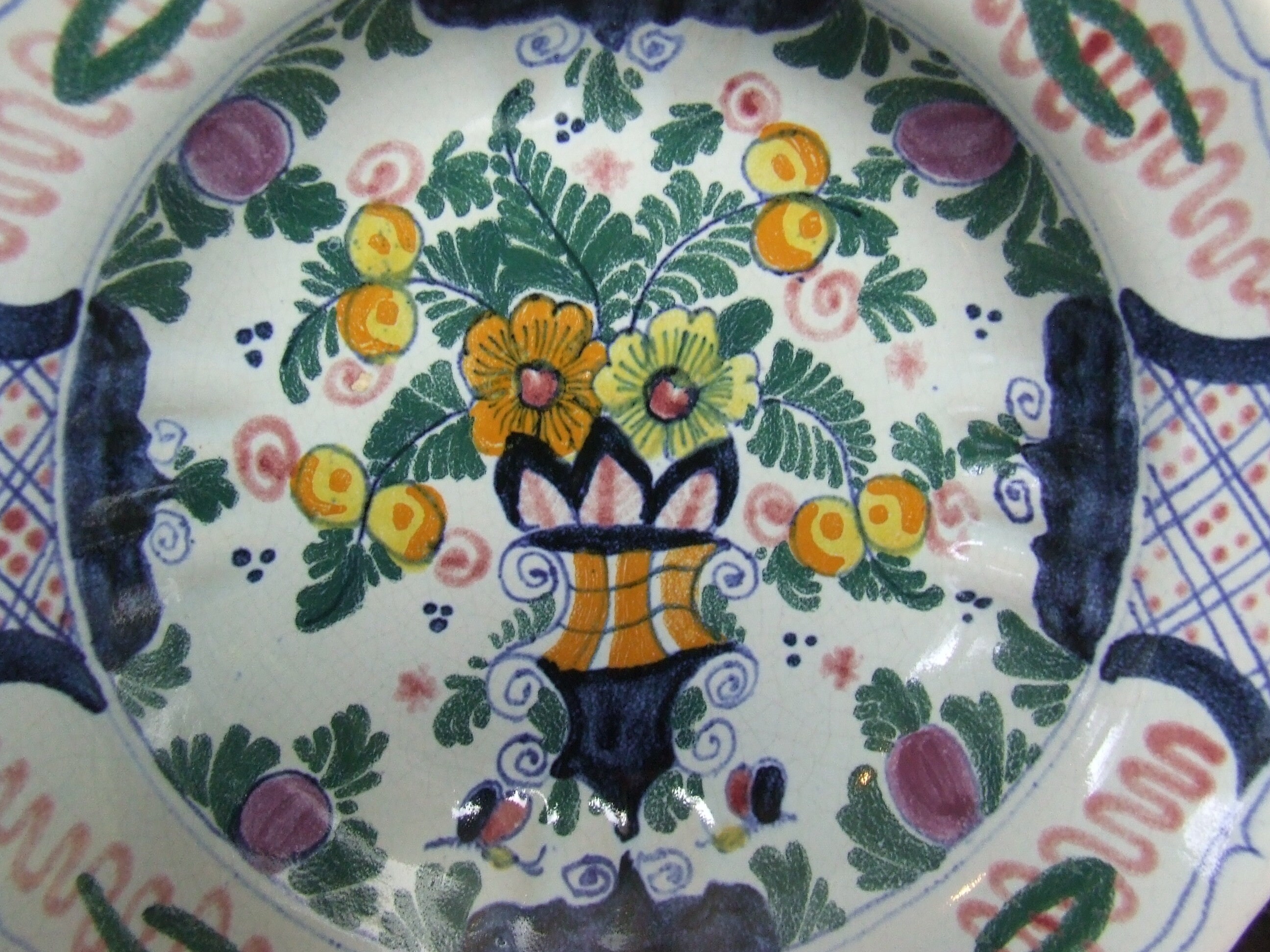
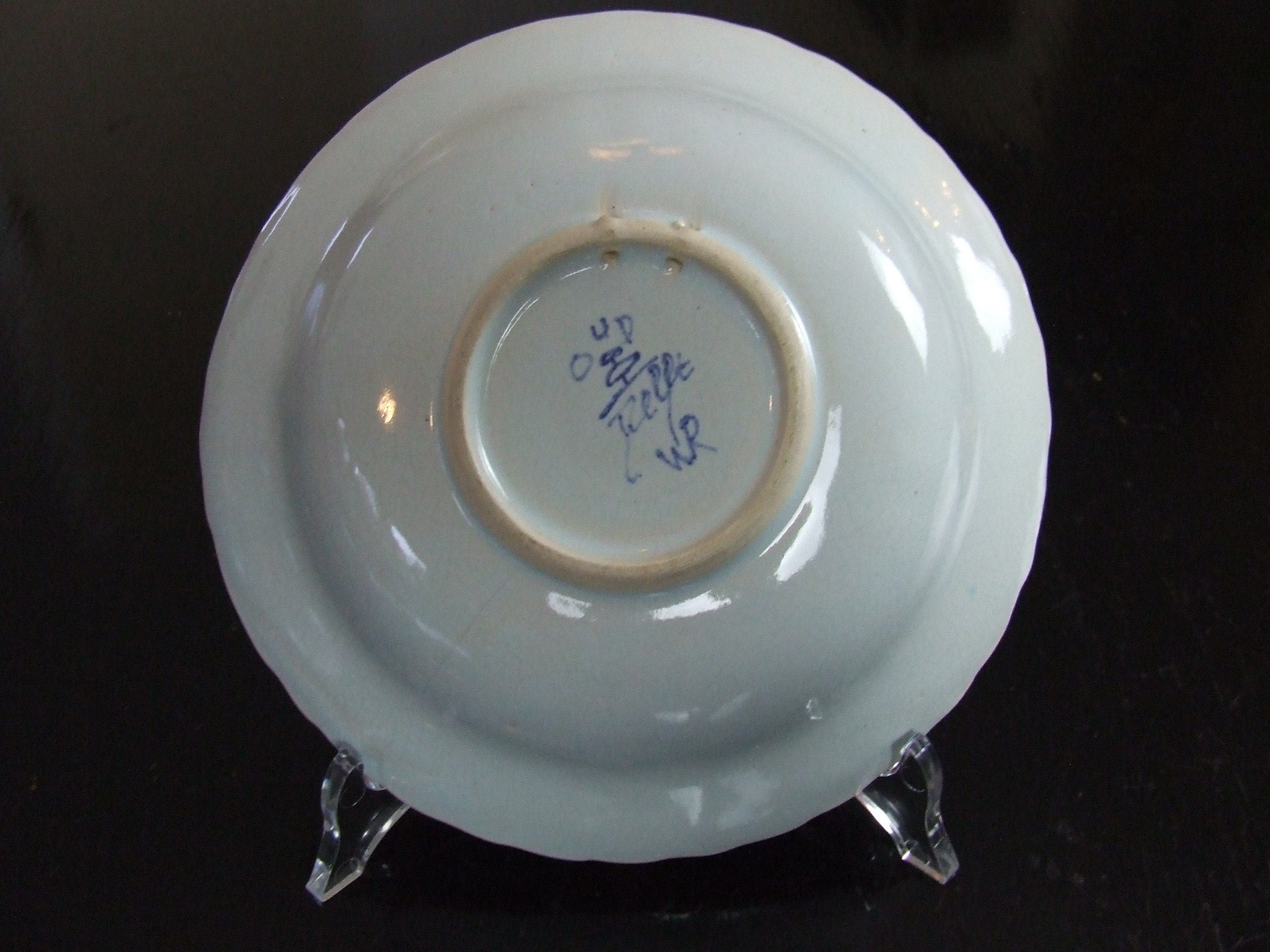
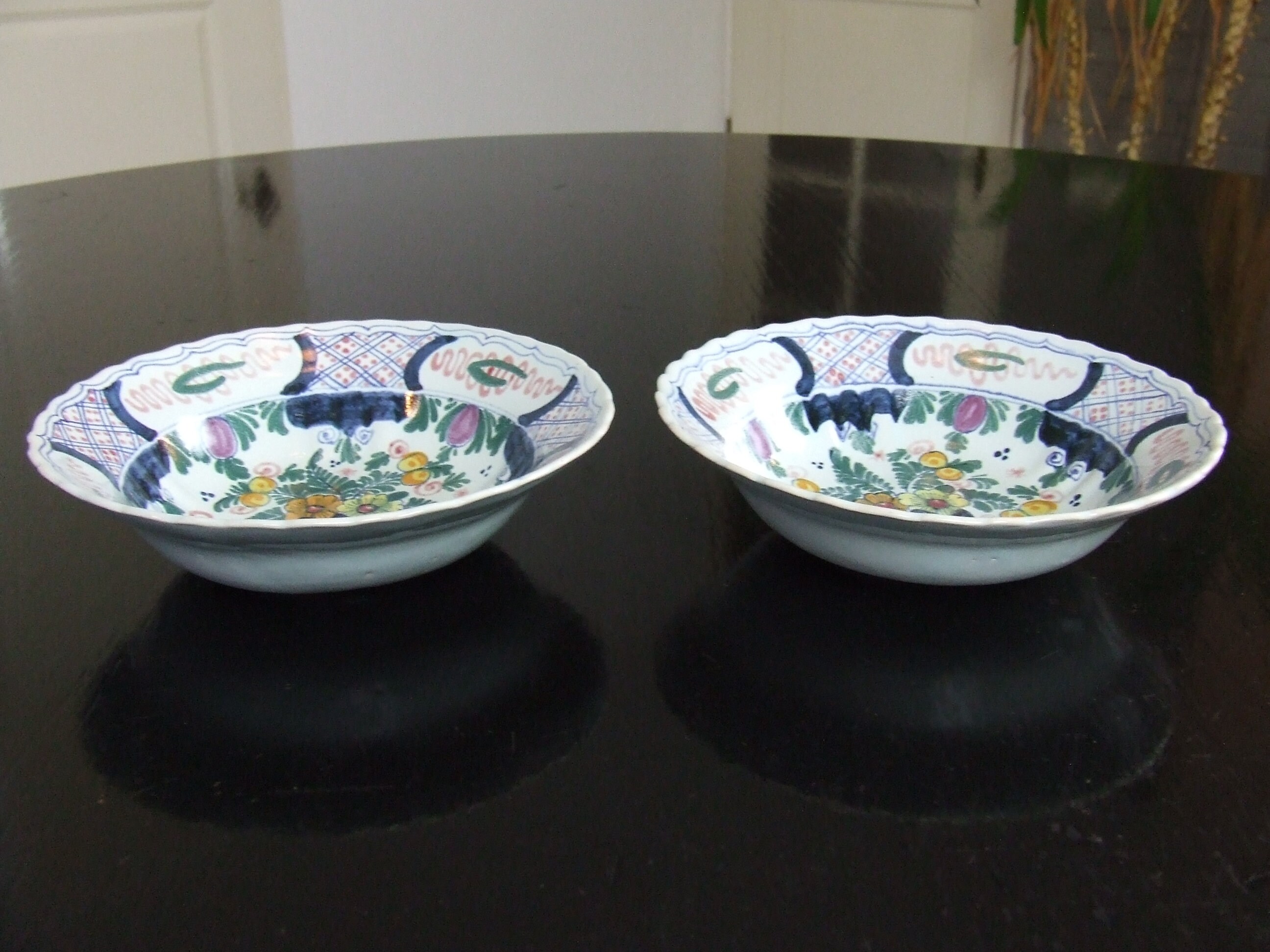
Pair of medium sized (17,5 x 4,8 cm) handpainted polychrome Delft style wall dishes (bowls) made between 1940 and 1968 by the Oud Delft factory located in Nijmegen, the Netherlands. The dishes are decorated using a tin-glaze (or a pseudo-tin-glaze, a white glaze without any lead or tin oxide) technique very similar to how antique (17th and 18th century) Delftware was created.
With the tin-glaze technique earthenware (made from local yellow or red baking clay) after a first firing is glazed with an opaque white tin-glaze. The decoration is then painted on this glaze and fused with it during a second firing. This creates a different effect than most modern Delftware, which is made from a (foreign) white baking clay mixture, on which after the first firing the decoration is directly painted and subsequently covered with a transparent glaze (before being fired a second time).
The bowls are identically decorated, with in the centre a Delft style flower basket surrounded by Delft style ornaments (originally based on old Chinese / Taoist symbols) on the rim. The painting is loose and informal, similar to much of the painting found on antique Delftware. Colours used are yellow, green, orange, violet red, blue and black. The rim of the bowls is slightly ribbed and scalloped.
The backside of the bowls is signed with a blue handpainted "OUD Delft mark" (used between 1940 and 1968), and a painters signature (WR, the signature of Mr. Wim Rietbergen). Both bowls have two holes drilled through their footring (one with a wire through it), to be able to hang them on a wall.
A nice pair of dishes in a classic, informal Delft style. Nice for on the wall, but also nice for on the table or upright in a plate stand!
Made by: Oud Delft
Place of manufacture: Nijmegen, the Netherlands
Year of manufacture: between 1940 and 1968
Method of decoration: handpainted on tin-glaze
Size: diameter: 17,5 cm, depth: 4,8 cm
Weight: total weight: 475 g (230 and 245 g each)
Condition: very good, there are no damages and there is very little wear. The tin-glaze is applied rather uneven, especially on the backside edge of the bowls it is sometimes thin or lacking, but this is part of the intended 'old look' of the factory. The colours are still very nice and bright and the bowls have a beautiful sheen. There is a light crazing, which adds charm to the piece and should not be regarded as a defect.
Additional pictures of the object can be provided if required.
----------------------------------------------------------------------
About Oud Delft:
Oud Delft (meaning "Old Delft") produced decorative Delftware between 1921 and 1996 in Nijmegen, the Netherlands. From 1921 to 1968 Oud Delft produced only handpainted blue and white and polychrome Delftware. From 1968 onwards, printing techniques started to replace the handpainting, with in the early years a mix between the two and in the later years only fully printed items. The handpainted items of Oud Delft were of good quality, and especially their polychrome items were easily recognisable by their distinctive palette of colours that differed from other producers. Unlike other producers, Oud Delft used an extra layer of white glaze as a background to their decorations, similar to the white tin-glaze layer once used on antique (19th century and earlier) Delftware. Most other producers of Delftware in the 20th century (with the notable exception of Tichelaar) just used the white biscuit of the stoneware used in modern Delftware as their background.
In 1996 Oud Delft was incorporated into Aardewerkfabriek 't Delftsche Huys in Waddinxveen, the Netherlands. They still produce (only fully printed, no handpainting) many of the models and designs of Oud Delft today.
----------------------------------------------------------------------
The bowls will be carefully packed and send by insured mail. If you buy multiple items from our shop, we will combine the shipping of these items. If the actual combined shipping costs are less than the shipping costs that you have already paid, we will refund the difference. So you will only pay the actual shipping costs.
If you are not satisfied with your purchase, you may contact us within 14 days from the delivery date to return the item. If the item is returned in its original condition, we will issue a refund for the price of the item (shipping costs are however not covered).
Shipping from The Netherlands
Processing time
1-2 business days
Customs and import taxes
Buyers are responsible for any customs and import taxes that may apply. I'm not responsible for delays due to customs.
Payment Options
Returns & Exchanges
I gladly accept returns
Just contact me within: 14 days of delivery
Ship items back to me within: 30 days of delivery
I don't accept exchanges or cancellations
But please contact me if you have any problems with your order.
Conditions of return
Buyers are responsible for return shipping costs. If the item is not returned in its original condition, the buyer is responsible for any loss in value.
Frequently Asked Questions
What are your shipping times?
We will send off your order within one or two working days. We use the standard parcel service of PostNL to ship our parcels. You can find their estimated delivery times per country here (shortened link to pdf download of PostNL): https://bit.ly/3ZHTMJ9. In the fourth column (parcels) you can find the delivery times of the standard service (in estimated business / working days). Please keep in mind that customs / import procedures in non-EU countries can sometimes add an extra week (or even two weeks) to the delivery times.
On request we can also ship with UPS for a faster delivery: expedited (within 10 days) or express (within a few days). There are no customs delays when shipping with UPS. Contact us before the purchase to get a quote.
How do you pack your items, will my item arrive safely?
Broken ceramics is a thing we do not like! Not only is it a waste of time and money, but it also (often) means the end for a rare and unique item, which was treasured and cared for by their previous owners. So we really want to avoid any damages during shipping!
We have lots of experience of shipping ceramics, and we have seen what works and what does not work to protect ceramics during transit. If we ship multiple items in one package, each item is carefully wrapped and kept well seperated from the other items. We use large boxes, with plenty of buffer all around the items, so the packages can withstand a lot of abuse. All our packages should be able to cope with a 1,5 m drop without the items getting damaged.
Do you take care of the environment?
Yes we do. We re-use packaging materials as much as possible, which means we rarely need to buy new materials for our packaging. Only foam peanuts are sometimes bought by us, in which case we prefer to use green starch based peanuts which are fully biodegradable, non-toxic and water-soluble.
Each year, we calculate the greenhouse gas emissions in CO2-equivalents caused by our shipping. We multiply that amount by 200% and then offset it in certified CO2 compensation projects based on tree planting / reforestation in various parts of the world. So far, we have offset 35,5 tonnes of CO2 emissions in projects in Bolivia and Borneo (Indonesia). See https://treesforall.nl/en/projects/ for more information on the projects.
How should I take care of my Dutch ceramics?
First of all, don't let them fall! Always handle them in a mindful way and put them in spots where they cannot be accidentally bumped over when cleaning or vacuuming. Some people put some (clean) sand in vases to make them more stable.
Second, don't clean them too often! Underglaze painted Gouda and Delftware can be perfectly cleaned with water if necessary, but often just dusting them off or polishing them up a bit with a soft dry cloth is enough. Overglaze painted items should not be cleaned too often.
The colours of ceramics do not fade in sunlight, so you can put them in bright spots where they look good. But do avoid large temperature differences, which will cause increased crazing in many Delftware and also Gouda type pieces.